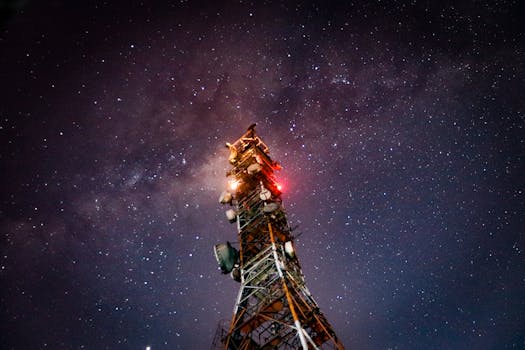
LEO Satellites: Revolutionizing Global Connectivity with Low Earth Orbit Technology
LEO satellites, or Low Earth Orbit satellites, are a type of satellite that operates at an altitude of around 160 to 2,000 kilometers above the Earth’s surface. This relatively low orbit allows LEO satellites to offer faster and more reliable connections than traditional satellite technology, making them an attractive solution for a wide range of applications, including global connectivity, remote sensing, and navigation.
At the beginning of the LEO satellites era, the technology was mainly used for military and scientific purposes. However, with the advancement of technology and the decreasing cost of launching satellites into space, LEO satellites are now being used for a variety of commercial and civilian applications. One of the most significant uses of LEO satellites is for providing global connectivity, particularly in areas where traditional telecommunications infrastructure is lacking.
How LEO Satellites Work
LEO satellites work by transmitting and receiving data to and from Earth-based stations or other satellites. They are typically launched into space using a rocket and then deployed into their designated orbit. Once in orbit, LEO satellites use their onboard transponders to receive and transmit data, which is then relayed to and from Earth-based stations or other satellites.
The low orbit of LEO satellites allows them to provide faster and more reliable connections than traditional satellite technology. This is because the signal has to travel a shorter distance, reducing latency and increasing the overall speed of the connection. Additionally, LEO satellites are less prone to interference from other satellites and terrestrial systems, making them a more reliable option for critical applications.
Applications of LEO Satellites
LEO satellites have a wide range of applications, including global connectivity, remote sensing, navigation, and more. One of the most significant uses of LEO satellites is for providing internet access to remote and underserved communities. Companies such as SpaceX and OneWeb are launching constellations of LEO satellites to provide global internet coverage, with the goal of bridging the digital divide and providing access to information and opportunities for people around the world.
LEO satellites are also being used for remote sensing applications, such as monitoring the environment, tracking weather patterns, and detecting natural disasters. They can provide high-resolution images of the Earth’s surface, allowing scientists and researchers to study the planet in unprecedented detail.
Benefits and Challenges of LEO Satellites
The benefits of LEO satellites are numerous, including faster and more reliable connections, lower latency, and increased accessibility. They also offer a more cost-effective solution for providing global connectivity, particularly in areas where traditional telecommunications infrastructure is lacking.
However, there are also challenges associated with LEO satellites, including the need for frequent launches to maintain a constellation, the risk of collisions with other satellites or space debris, and the potential for interference with other satellite systems. Additionally, the launch of large constellations of LEO satellites has raised concerns about the impact on the environment and the potential for space debris.
In conclusion, LEO satellites are revolutionizing the way we communicate and access the internet, offering faster and more reliable connections than traditional satellite technology. With their wide range of applications, including global connectivity, remote sensing, and navigation, LEO satellites are an exciting and rapidly evolving field that is transforming the way we live and work.



